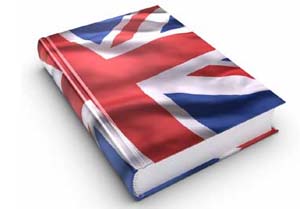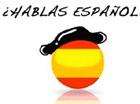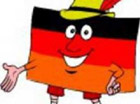The Welsh flag
The Welsh flag has two equal horizontal stripes, white
above green, and a large red dragon passant. The origin of the Welsh Dragon
were undoubtedly the Roman "draconi" standards of the cohorts, which were far
more numerous than the legions, particularly after the withdrawal of the
latter. The dragon symbol used by the Romans appear to have been inspired by
the dragon standard carried by their Dacian and Parthian enemies or perhaps by
the Chinese dragon and Romans had adopted this device by the third century. As
Roman legions withdrew at the end of the fourth century the people who were
left behind (the Celts people) forever must most naturally have thought of the
Dragon as the symbol of that Roman civilization which they belonged and which they
were now defending against the ravages of the barbarian invaders. For their
battle standard no emblem was more natural than the familiar Dragon of the
Roman cohort. From the very first records of the Welsh language the words
"draig", "dragon" mean warrior and great warriors are reffered to as
"pendraig", "pendragon". While the warriors, chiefs and princes of Wales were
constantly called "dragons", we don not have any clear evidence to prove that
they ever used a dragon, let alone a red dragon, as a military standard at any
time before the fifteenth century. It is perfectly have contain no unambiguous
reference to the use of a dragon banner by the Welsh resistance fighters until
1485. In fact the red dragon became the symbol of the Welsh nation trough its adoption
by the Tudor ancestors of king Henry VII. Edmund and Jasper Tudor had a dragon
as crest and supporter to the arms granted them by Henry VI. When Henry Tudor
faced king Richard III at the battle of Bosworth in 1485 his battle standards
numbered three. One of these carried the arms of St. George of England, one the
arms of the house of Beaufort and one was a "Red ffyry dragon peyntid upon
white and Grene Saracenet". This dragon banner represented Henry Tudor's claim
to be a true representative of the ancient kings of Britain and served as his
tribute to the Welsh people who had made his victory possible. In the Welsh
literary tradition, in the tale "Lludd a Llefelys", the Red Dragon is
associated with the birth of Merlin, in which he prophesized a battle between a
red dragon and a blue or white one. The blue one won, symbolizing how an evil
Saxon king would be defeated by his Celtic enemies. Through the Middle Ages the
colour of the
Dragon fluctuates between gold and red. This like so much else, is a legacy
from Geoffrey of Monmouth, for while the dragon of the Britons seen by Ambrosius is plainly red ("rubeus
draco"), the one displayed by Uther
Pendragon is gold ("vexillum,
aureus draco"). The princes
of Gwynedd, whose family colours
were red and gold, had no reason to prefer one colour
to the other. In 1807, after the union of the parliaments of Great Britain and
Ireland, it was declared that "a red dragon passant standing on a mound should
be the King's badge for Wales. In 1953, Queen Elizabeth II decreed that the
royal badge for Wales should be augmented, and to its red dragon there was
added the famous motto "Y ddraig goch
ddyry cychwyn". This
augmented badge was placed on a white flag and flown aver government buildings
on appropriate occasion. But in 1958 the Gorsedd of
Bards expressed the wish that in future only the Red Dragon be recognized as
the national flag of Wales, instead of this augmented badge. Her Majesty
commanded that in future only the actually flag of Wales should be flown on
Government Buildings. The augmented badge was to continue in use in accordance
with established heraldic procedure.







